Europe’s electric vehicle (EV) market has slowed in the first half of 2024, forcing automakers to scale back their ambitions. So far, however, central and eastern Europe (CEE) has remained relatively untouched by this trend, and analysts believe the region has a good chance to keep its competitive edge, at least if local authorities play their cards right.
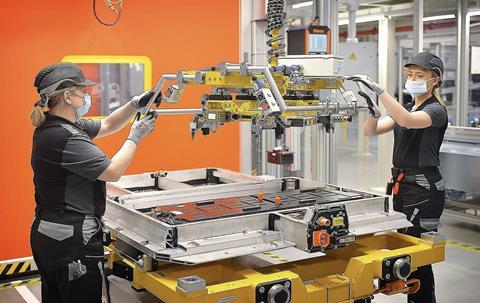
In the first half of 2024, Europe EV sales climbed by a mere 1% compared with the previous year, a recent report by Rho Motion, an international thinktank showed. By comparison, global sales spiked by 20%, driven primarily by China, where the figures exceeded the 2022 level by 30%. The situation in Europe makes investors doubtful whether the forecasts of booming growth in EV sales in Europe through 2030 are still justified.
The issue is particularly pressing as those forecasts informed investment projects for the construction of dozens of EV plants across Europe, which may be in peril now.
“The EV slowdown is clearly happening, but it is not yet clear if this is just a temporary setback or a longer-term trend,” commented Ron Stoop, strategic analyst at the Hague Centre for Strategic Studies (HCSS), who is confident there is no reason to panic yet. “Overall, the sales growth of EVs has been robust over the last few years with around 20-30% growth per year, so the upward trend [in the longer run] is quite steep,” he added.
In general, observers indicate that the discouraging 2024 EV sales dynamic is still not enough to draw gloomy conclusions about the future of the European battery sector.
“Whilst demand for EV batteries has been steadily increasing in recent years, signs are showing some slowdown,” commented Antonie Kerwien, a spokesperson for the European Investment Bank (EIB). “However, this is a strategic area for Europe, which uses initiatives like the European Battery Alliance and the Commission’s Strategic Action Plan on Batteries to bolster the industry.”
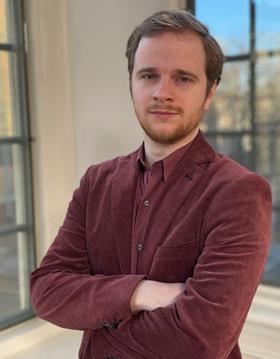
Fluctuation and uncertainty
Undoubtedly, the success of the EV transition will largely determine the future of the European automotive logistics industry.
“Fluctuations in EV demand pose challenges for our sector if the overall planning and forecasts provided by OEMs significantly deviate from reality. This leads to substantial impacts on capacity management and operational efficiency in the sector,” commented Andreea Serbu, senior manager of external affairs at the Association of European Vehicle Logistics (ECG).
Serbu admitted that ECG cannot provide a specific outlook at this time because of the unpredictable nature of the EV market.
To better face uncertainty, Serbu reiterated that ECG has produced a recommended forecasting methodology, which it encourages all actors in the sector to adopt at all times. This methodology is designed to help deal effectively with market disruptions or fluctuations, ensuring smoother operations and better capacity management.
“The automotive industry is an ever-evolving market, and we have been anticipating major changes in the global supply chain as a result of electrification,” commented Stuart Stobie, chief commercial officer at Priority Freight. “The changes in demand can be difficult to forecast but not completely unexpected with the increasing costs to buy and operate an electric vehicle, immature infrastructure and range anxiety – add to this the recent energy crisis, and it’s understandable that the EV industry would be susceptible to fluctuations,” Stobie added.
Fluctuations in EV demand pose challenges for our sector if the overall planning and forecasts provided by OEMs significantly deviate from reality. This leads to substantial impacts on capacity management and operational efficiency in the sector – Andreea Serbu, ECG
CEE is on safe ground for now
The EV slowdown can certainly impact battery production. More than half of planned plants are at risk of being delayed, scaled down or even cancelled, NGO Transport & Environment (T&E) estimated.
However, so far most of the cancelled projects are to be found in western and southern Europe, in countries such as Germany, Italy and the UK, Stoop pointed out.
“The first reason that investments in mostly western and southern Europe are being cancelled is because production there is relatively more expensive,” Stoop said, citing the labour, land and energy costs. “Therefore, they are the first to be dropped when demand falls, or competitors undercut the market because these locations are the least profitable. Central and eastern Europe locations are easier to maintain when turnover expectations are reduced because of the lower production costs.”

In the past few years, the CEE region has shown outstanding performance, especially in Poland, which now accounts for the lion’s share of EU battery production, commented Petr Dolejsi, mobility and sustainable transport director with the European Automobile Manufacturers’ Association (Acea).
Despite the slowdown, the outlook for the region, specifically Poland and Hungary, looks optimistic, Dolejsi noted.
“Poland and Hungary will be dominant players in the emerging battery value chain in the future,” he said. “Both countries were traditionally open to foreign investment in the automotive sector, and they continue to expand this support also to other parts of the value chain. Both countries are also seeing a future in the automotive sector and associated industries and provide incentives for additional investments in our sector, which seems to be a critical factor for investment localisation,” Dolesji said.
Hungary is set to be Europe’s number one battery cell producer by 2026 and has managed to secure more of its planned capacity over the past year – most of which is being developed by Asian companies, T&E said.
“In the EU context, these [CEE] locations are well endowed to supply the EU market with batteries due to their relative proximity to Germany, their well-educated workforce, relatively affordable wages and space to develop factories,” EIB’s Kerwien agreed.
In the EU context, these [CEE] locations are well endowed to supply the EU market with batteries due to their relative proximity to Germany, their well-educated workforce, relatively affordable wages and space to develop factories – Antonie Kerwien, European Investment Bank
In this context, CEE’s competitive edge is unlikely to fall away, he insisted, adding a warning that this primarily concerns the European market, while global competition looks a bit more complicated.
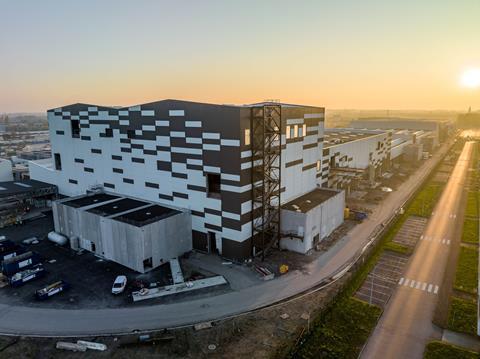
“The broader competitivity of these regions is dependent on general EU energy prices vis-a-vis other areas, the battery ecosystems that lead to economies of scale and trade regulations that maybe favour or inhibit the growth of battery factories in CEE,” he added.
“Another reason [why EV battery plants are primarily cancelled in Western Europe] is that there were more investments planned in Germany, Sweden, Italy, Spain and the UK in the last five years than in CEE countries. Therefore, the dropoff is larger as well,” Stoop added.
Political challenges
However, in the increasingly divided world, the opportunities in the European EV sector may seem less attractive than they were just a couple of years ago.
“European industries face persistent challenges, from the evolving geopolitical landscape and global market pressures to harmonising regulations across countries and upskilling the workforce for tomorrow’s demands,” said EIB’s Kerwien. “How the EU as a whole rises to these challenges will determine the survival and success of our industries and companies.”
The growth pace of EV sales in Europe and globally will be decisive for the sector’s future as investors now consider various opportunities to invest their money.
“The key challenge for the battery sector is to be found on the demand side: are there enough potential customers to justify long-term spending on production capacity in Europe? So long as the demand is there, there will be a strong incentive to serve it,” Stoop explained.

“Whether this happens inside or outside Europe is subject to national and EU policy, which could exert considerable influence on the incentives for producers to build factories in Europe through local content requirements, import tariffs and other policies, or outside Europe due to high production price differentials and affordable transport costs,” Stoop added.
On the other hand, Acea remains quite optimistic about the general European EV industry’s future, indicating that the already established legal framework gives investors every reason to believe in the market’s soon growth.
“The automotive industry has a clearly defined decarbonisation goal towards 2035. Therefore, from a long-term perspective, there is also a clear pathway for the battery industry and expected demand for batteries,” Dolesji said.
Speaking about the recent slowdown, Dolejsi admitted that despite the general positive, “from a short- and mid-term perspective, market fluctuations may occur”.
“This is why our industry is calling for a robust EU industrial strategy to establish the enabling conditions to support green and digital transformation. This would help accelerate road transport decarbonisation and provide robust support for electrification,” Dolesji said.
Dolesji also calls to keep in mind the term horizon of the investments – most gigafactories are expected to be operational within the second half of this decade, when the automotive industry faces a 55% CO2-reduction target in 2030.
“This implies a significant demand for automotive batteries,” he asserted.
However, market players also warn that the European EV transition also requires affordable electricity tariffs. Otherwise, customers would be reluctant to buy electric transport.
“From a long-term perspective, considering the energy intensity of battery production, ensuring a sufficient supply of affordable renewable energy is critical. But that goes beyond the battery sector – the automotive sector and our customers would need access to cheaper electricity to improve overall total costs of ownership of electric vehicles,” Dolesji said.
Competitors next door
In the meantime, Russian nuclear corporation Rosatom is proceeding with the construction of a gigafactory in the Kaliningrad region, a Russian exclave in Europe between Poland and Lithuania, reportedly for Rub 51 billion ($700m), likely eyeing the European EV battery market.
The construction originally started in 2022 at the site of the abandoned Baltic nuclear plant, is due to be completed in 2025.
Officially, battery exports to Europe are not in the cards, largely because Western sanctions imposed over the Ukrainian conflict ruined Russia-EU trade relationships. However, building a plant in territory without land connecting with mainland Russia makes little economic sense unless Europe is also a target market, observers indicated.
To make production costs competitive, the Kaliningrad factory is due to manufacture 250,000 batteries per year, Sergey Burgazliev, an independent Russian automotive industry analyst, commented. It is not clear whether investors plan to sell this quantity since the nascent Russian EV market is unlikely to offer sufficient demand, he admitted.
Under the Russian government’s EV industry roadmap, Russia must manufacture at least 25,000 EVs by the end of 2024, while in 2030, EVs should account for 10% of Russian automotive production.
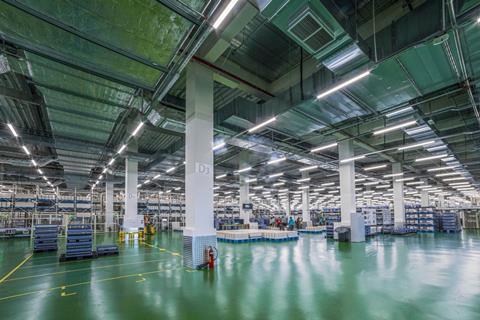
However, the plans were drafted before Western sanctions wreaked havoc on the Russian automotive industry.
The Russian government estimated that Rub 591 billion ($7 billion) was due to be invested in the Russian EV sector through 2030. However, with 80% of this money planned to come from non-budget sources, again, there are certain doubts that this level can be achieved.
Burgazliev called the roadmap too optimistic, reminding that Russian EV production is non-existent yet. All EVs of Russian origin, including the Soviet-era Moskovitz plant revived at the former Renault capacities in Moscow Oblast, are slightly retrofitted Chinese models assembled from imported kits.
“Therefore, it is not clear how the production in Kaliningrad will be loaded,” Burgazliev said, adding that this is even less likely, given that Rosatom is building a second EV battery plant in the Moscow region.
Another source in the Russian automotive industry who wished not to be named said that the battery exports to Europe from the Kaliningrad factory would make perfect economic sense from a logistics standpoint. However, he added, it is hard to believe that project managers expect that by 2025, the political reality will “turn upside down” and that exports of such products to the EU will become possible again.






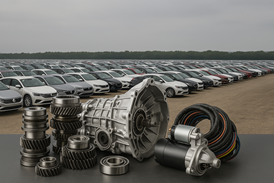




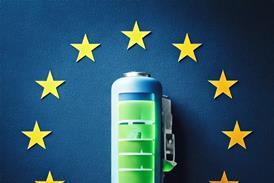




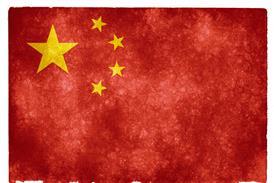
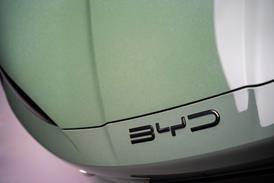
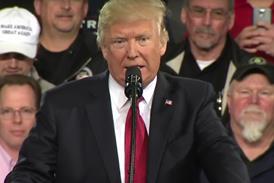






![Global[1]](https://d3n5uof8vony13.cloudfront.net/Pictures/web/a/d/s/global1_726550.svgz)

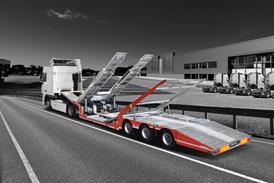

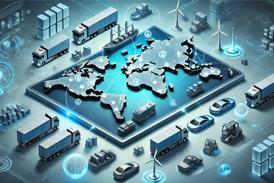

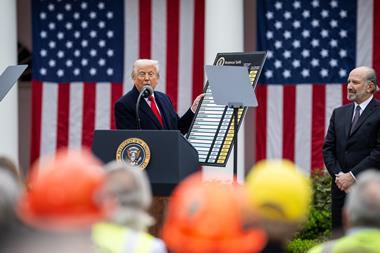
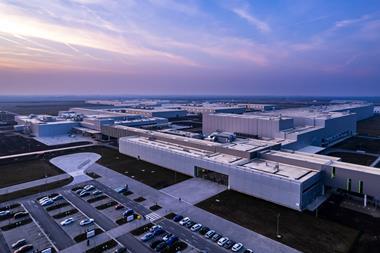

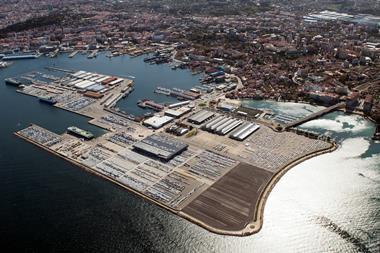




No comments yet